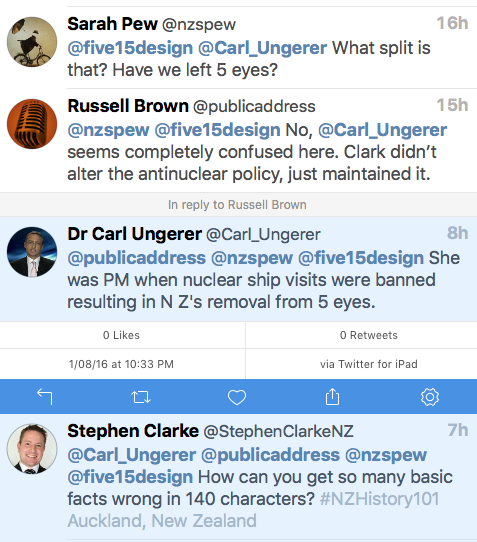The week began for this blog with a close look at Radio New Zealand's boffo new survey results. And then on Tuesday evening, at the launch of Murray Cammick's Flash Cars exhibition – back in a gallery for the first time in 40 years – I bumped into an old friend of Murray's, William Dart.
William has been making New Horizons, a contemporary music programme on Concert FM, since roughly the dawn of recorded time. And throughout that time he has brought an openness to new music and an ability to perceive the roughness of pop with the ear of a classical critic. He has championed and taken seriously music that would otherwise never be heard on Concert. He doesn't claim to be down with the kids – he's 69 and the wrong side of heart surgery and a stroke – but what he does provides a unique complement to RNZ's other pop music programming.
I said as much to him as we inspected Murray's photographs. He noted with some satisfaction that in his most recent programme, reviewing Lawrence Arabia's new Absolute Truth album, he had detected the inspiration (coincidental or otherwise) for the album's lead track, 'A Lake' – which was an obscure Randy Newman song, 'Snow'. The programme includes a recording of the song by Nilsson to illustrate the point.
William goes on to make a comparison with Jacques Brel and then consider a couple of tracks from an earlier Lawrence Arabia, Chant Darling. He often does this: draws a continuity not only with an artist's previous work, but with other, older musical ideas. He also notes – how did I miss this? – the Philly disco intimations of another Absolute Truth track, 'Another Century'.
William did a similar job in considering Dave Dobbyn's Harmony House album at the beginning of the year. It is a most useful service. New Horizons is available as a podcast (although the podcast subscription button on the page seems to be broken – just me?).
Another musical treat on RNZ: last weekend's return of the occasional series The Mixtape, in which John Campbell played and discussed the music that moves him. Even if you've heard the song before, there's something really good about hearing someone else speak thoughtfully about what it means to them. I listened to it while I prepared a goat curry – a sort of weekend edition of the popular weekday listening game #cookingwithjohn – and it made me happy. The goat curry turned out bloody well too.
–––
Lontalius' 'Light Shines Through Dust' has a pretty new video by production house Arty Films. It's made with a camera obscura:
–––
If you're one of those people who like Pink Floyd but only the early stuff, there's a box set coming for you. The Early Years 1965 – 1972 runs to 27 discs and will set you back nearly $1000:
There's also a more conventionally-priced and substantially less deluxe version. It's not out till November, but there are details and pre-order links here.
–––
When I worked at Rip It Up in the 1980s, I met and interviewed all manner of musicians, from Nick Cave to Nico, INXS to a particularly unhappy Andy Summers. Also: Patsy Riggir.
Strictly speaking, the interview was for Rip It Up's style sibling, ChaCha. But the main thing is, Patsy Riggir was bloody lovely company and I've never forgotten it.
As Glen Moffat explains in his new Audioculture profile of Patsy, she came from a deep country music heritage – her father Jack was recording with Eldred Stebbing in 1951. She was New Zealand's platinum-selling queen of country in the 80s.
–––
Tunes!
Denver DJ Funk Hunk has a new clutch of edits available as a free download – the only catch is you have to sign up to Juno download to get 'em. It's worth the two minutes it'll take.
–––
The Hard News Friday Music Post is kindly sponsored by:


